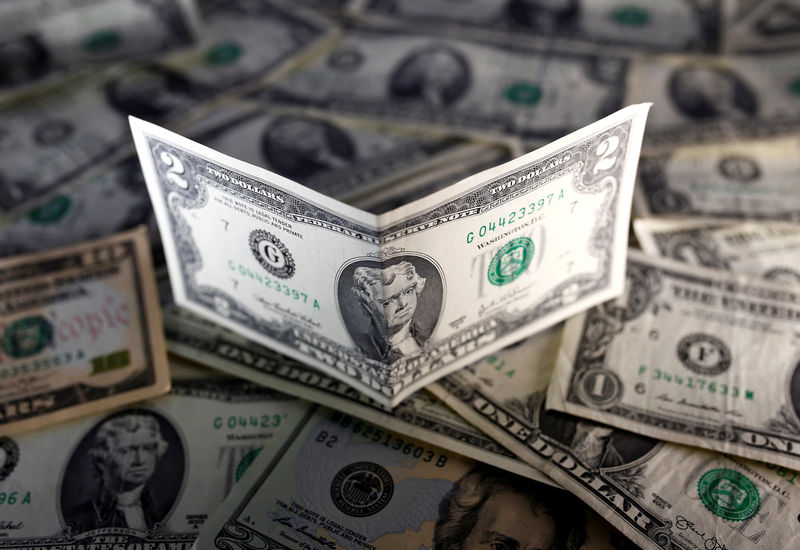Investing.com – The U.S. dollar traded in tight ranges Thursday, as traders digested some mixed economic data ahead of the widely-watched payrolls report which closes out the week.
At 05:35 ET (09:35 GMT), the Dollar Index, which tracks the greenback against a basket of six other currencies, edged just higher to 103.917, after reaching the highest since the end of July on Tuesday.
Dollar steadies
The dollar is struggling to make more headway, after recent gains, as recent economic readings have been proved difficult to read in terms of illustrating the strength of the US economy.
US private payroll growth surged in October, data showed on Wednesday, but this followed job openings coming in lower than anticipated in September, slipping to their lowest level since January 2021.
Additionally, data showed the US economy grew at an annualised rate of 2.8% in the third quarter, slightly lower than the 3% expected by economists.
The economic data slate Thursday includes weekly jobless claims as well as the core PCE deflator, the Fed’s preferred price gauge, but most eyes will be on the nonfarm payrolls release on Friday.
Also of interest has been the run-up to the presidential election on Tuesday, with the dollar benefiting from trades betting Republican candidate Donald Trump will win, although the race with Vice President Kamala Harris appears very close.
DXY is currently near support at 104.00, said ING, “ and after one-way bullish traffic for over a month, may be due a modest correction to the 103.65 area.”
German retail sales rise
In Europe, EUR/USD traded largely unchanged at 1.0857, after German retail sales unexpectedly rose in September, gaining by 1.2% compared with the previous month.
This followed data showing the German economy expanded by 0.2% in the third quarter from the previous three months, ahead of expectations.
However, the European Central Bank is still expected to continue cutting interest rates, especially if eurozone CPI, due later in the session, remains below the central bank’s 2.0% target.
The ECB has cut interest rates three times this year, with the latest cut at its last meeting in October, the first back-to-back cut since the euro crisis in 2011.
“EUR/USD could retest yesterday’s 1.0870 high on today’s European data – but a move up to 1.09030 might be a bridge too far given the pivotal US elections next Tuesday,” added ING.
GBP/USD rose 0.1% to 1.2976, in the wake of Wednesday’s UK budget, the first for the new Labour Government.
“Labour’s large tax-and-spend budget – described by some as an ‘old Labour’ policy – is still reverberating across UK asset markets,” ING noted. “Sterling briefly got a lift yesterday on the view that the budget was stimulative and that the Bank of England easing cycle would need to be repriced higher.”
“However … we suspect the BoE is unlikely to be swayed by the government’s budget plans.”
BOJ maintains interest rates at low levels
USD/JPY fell 0.6% to 152.47, with the yen gaining even after the Bank of Japan maintained ultra-low interest rates earlier Thursday.
BOJ Governor Kazuo Ueda emphasised the need to scrutinise global economic developments in deciding when to next tighten policy, highlighting its focus on risks to a fragile domestic recovery.
“As for the timing of the next rate hike, we have not preset idea. We will scrutinise data available at the time at each policy meeting, and update our view on the economy and outlook, in deciding policy,” he said.
USD/CNY rose 0.1% to 7.1192, after the release of China’s manufacturing PMI, which showed activity in October expanded for the first time in six months.
The official PMI rose to 50.1 in October from 49.8 in September, just above the 50-mark separating growth from contraction.

